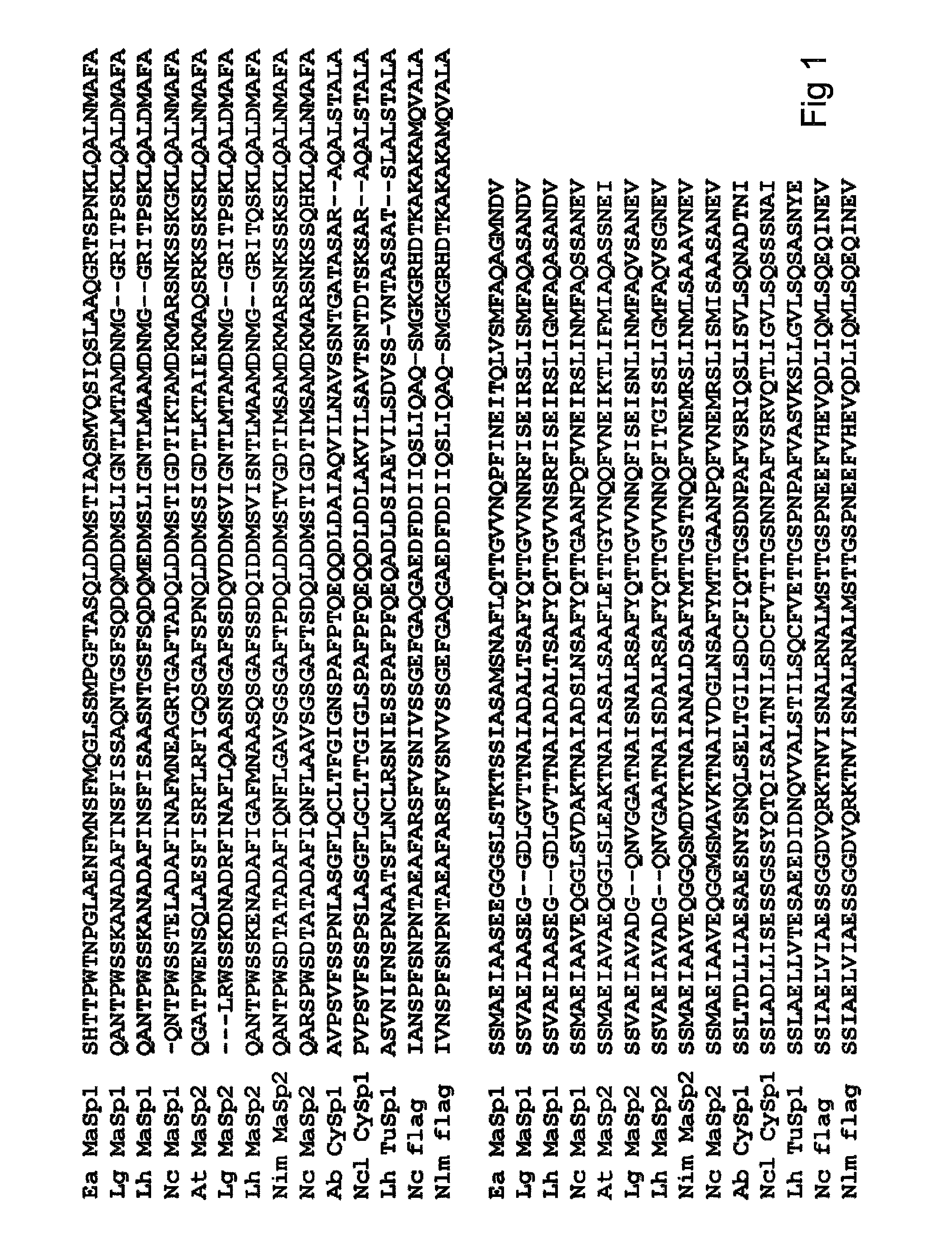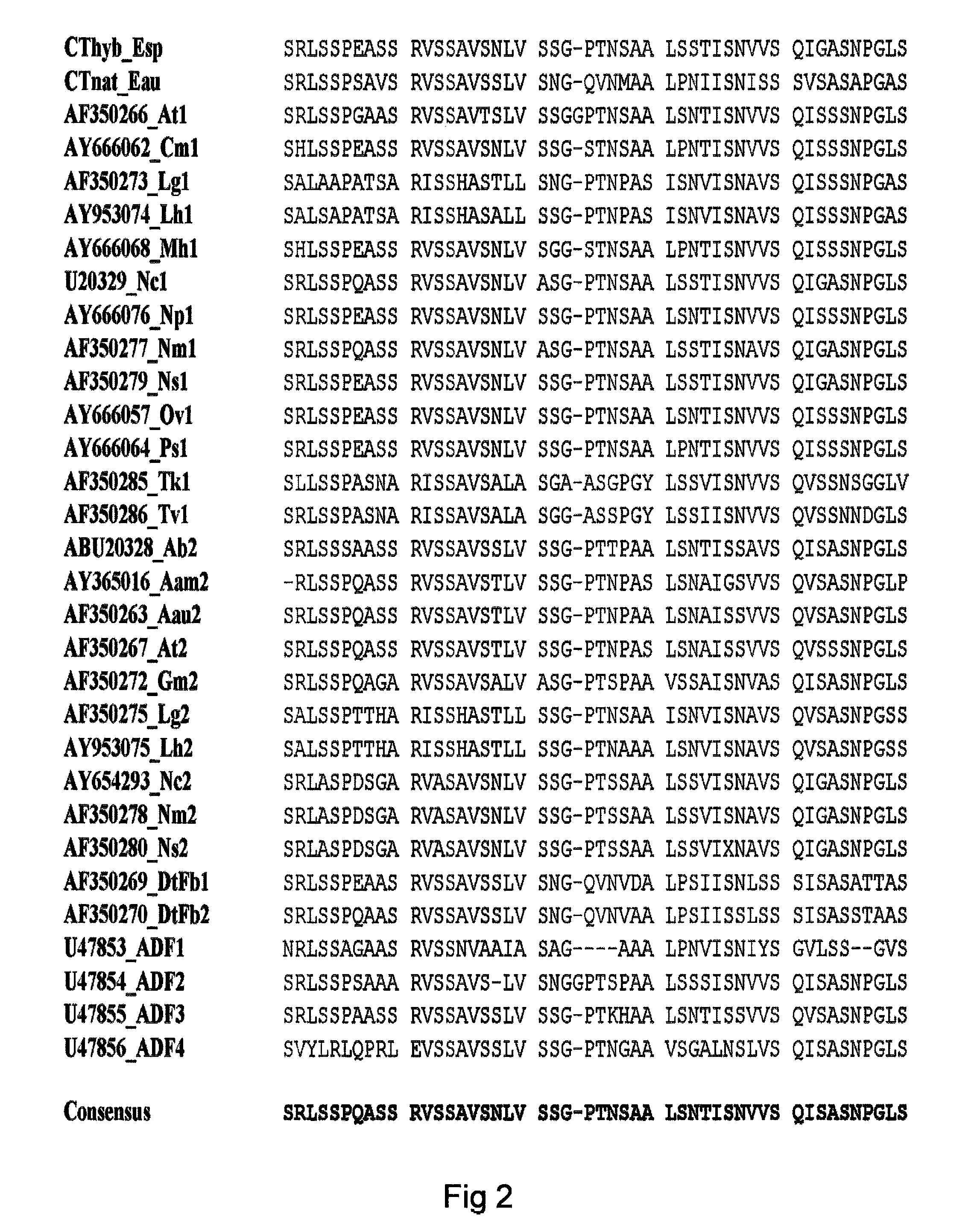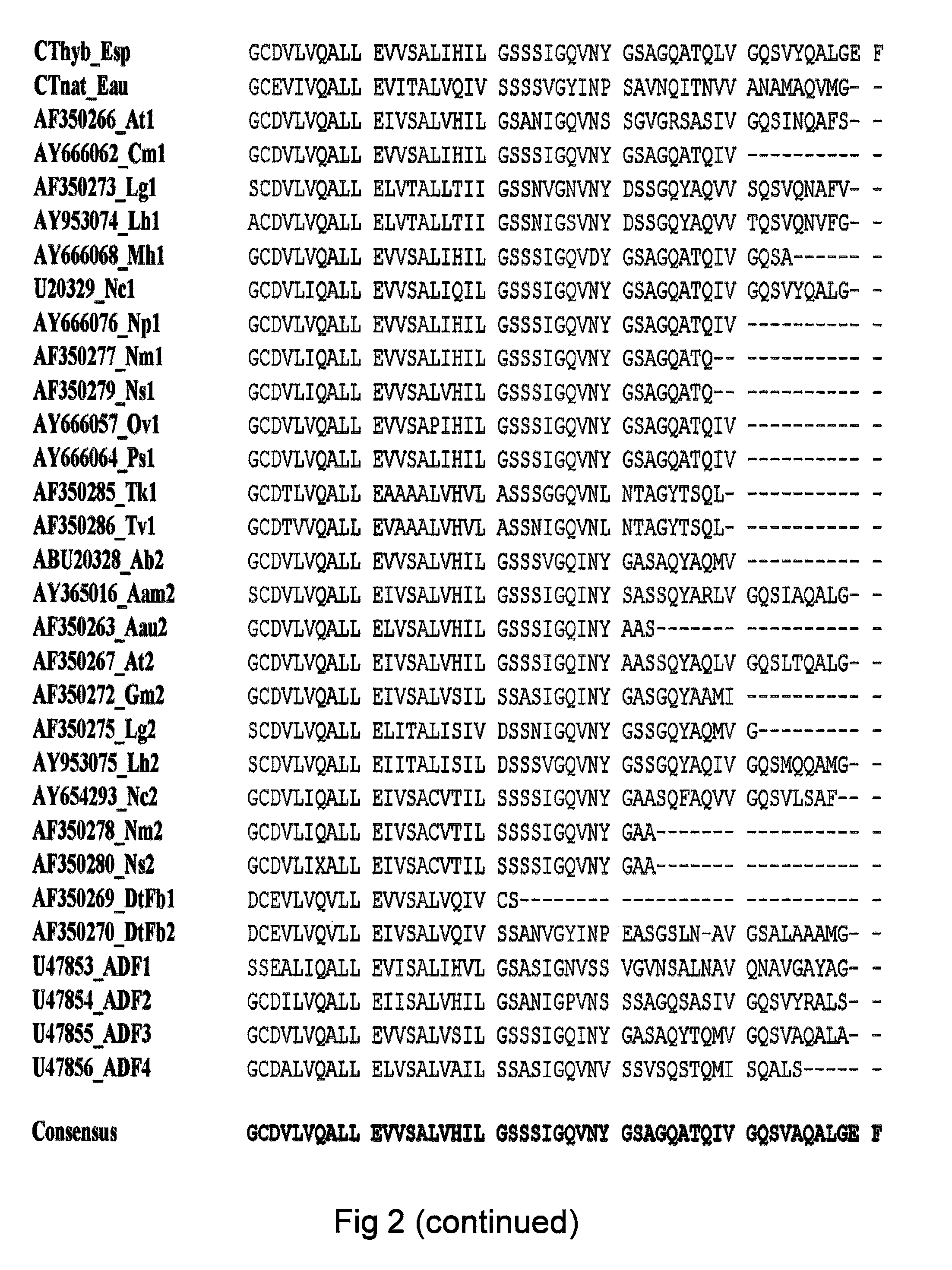Method of producing polymers of spider silk proteins
a technology of spider silk and protein, which is applied in the direction of peptide/protein ingredients, pharmaceutical active ingredients, peptides, etc., can solve the problems of dragline silk protein expression, transcription and translation errors, and difficult recombinant production of spider silk proteins and fragments thereo
- Summary
- Abstract
- Description
- Claims
- Application Information
AI Technical Summary
Benefits of technology
Problems solved by technology
Method used
Image
Examples
example 1
Expression and Purification of NT and Minispidroins
[0287]Expression vectors (SEQ ID NO: 14-16 and others) were constructed to produce NT (SEQ ID NO: 6), NTΔHis6, NT5Rep (SEQ ID NO: 4), NT4Rep (SEQ ID NO: 3), and 4RepCT (SEQ ID NO: 2), respectively, as C-terminal fusions to His6TrxHis6, and NT4RepCT (SEQ ID NO: 5) as an N-terminal fusion to His6. The different vectors were used to transform Escherichia coli BL21(DE3) cells (Merck Biosciences) that were grown at 30° C. in Luria-Bertani medium containing kanamycin to an OD600 of ˜1, induced with isopropyl-β-D-thiogalactopyranoside, and further incubated for up to 4 hours at room temperature. Thereafter, cells were harvested and resuspended in 20 mM Tris-HCl (pH 8.0) supplemented with lysozyme and DNase I. After complete lysis, the 15000 g supernatants were loaded onto a column packed with Ni-NTA Sepharose (GE Healthcare, Uppsala, Sweden). The column was washed extensively before bound proteins were eluted with 300 mM imidazole. Fractio...
example 2
pH-Dependent Polymerisation of NT and Minispidroins
[0288]Polymerisation of mini-spidroins with (NT4RepCT or NT4Rep) or without NT (4RepCT or 4Rep) was performed at pH 7 (FIG. 3, above time scale) or at pH 6 (FIG. 3, below time scale).
[0289]Miniature spidroins consisting of repeat regions, with or without the C-terminal fragment show no sensitivity towards environmental changes, such as pH fluctuations (4Rep and 4RepCT; FIG. 3). To test the hypothesis that it is the N-terminal fragment that is responsible for pH-dependent spidroin polymerisation, several constructs encompassing the N-terminal fragment of major ampullate spidroin (MaSp) 1 from Euprosthenops australis (NT, NT4Rep and NT4RepCT; FIG. 3) were used to obtain purified recombinant proteins (Example 1). Dynamic light scattering, turbidimetry, and scanning electron microscopy were used to probe the effect of pH and salt concentration on solubility and polymerisation of NT alone, as well as of the minispidroin constructs.
[0290]...
example 3
NT as a Mediator of pH-Dependent and Reversible Interactions
[0295]The N-terminal fragment (NT) of major ampullate spidroin 1 from the dragline of Euprosthenops australis is highly soluble (>210 mg / ml) at pH 7 but polymerises via charge interactions into ˜700 nm polymers at pH values below 6.4 (shown by dynamic light scattering and turbidimetry). The NT polymerisation is easily reversed by an increase of pH and blocked by high levels of salt. These polymerisation properties are propagated into fusion proteins that include the NT fragment (e.g. NT-X and NT-Y), which thereby gain solubility at pH 7 but quickly polymerise at pH 6 (FIG. 7). This reversible way of assembling two different proteins can be used in studies of interactions between proteins, nucleic acids, carbohydrates or lipids, for example analyses of protein-protein interactions employing fluorescence resonance energy transfer, or in induction of activities, for example enzyme activities, or for localization or immobilizat...
PUM
| Property | Measurement | Unit |
|---|---|---|
| pH | aaaaa | aaaaa |
| pH | aaaaa | aaaaa |
| ionic strength | aaaaa | aaaaa |
Abstract
Description
Claims
Application Information
 Login to View More
Login to View More - R&D
- Intellectual Property
- Life Sciences
- Materials
- Tech Scout
- Unparalleled Data Quality
- Higher Quality Content
- 60% Fewer Hallucinations
Browse by: Latest US Patents, China's latest patents, Technical Efficacy Thesaurus, Application Domain, Technology Topic, Popular Technical Reports.
© 2025 PatSnap. All rights reserved.Legal|Privacy policy|Modern Slavery Act Transparency Statement|Sitemap|About US| Contact US: help@patsnap.com



